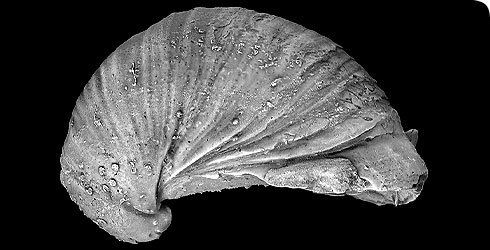Gryphaea obliquata (devil’s toenails)
An iconic fossil for an icon of palaeontology. Mary Anning (1799-1847), now one of the most celebrated pioneers of palaeontology, is usually associated with her famous discoveries of marine reptiles such as Ichthyosaurs and Plesiosaurus and the pterosaur Dimorphodon.
Gryphaea obliquata, along with Gryphaea arcuata, are commonly referred to as Devil’s toenails and are both found in the Lower Lias (Lower Jurassic) of Britain. They may not be the most obvious choice to associate with Mary, but as one of the most distinctive and abundant fossils of the Lower Lias, Gryphaea was as familiar to her as it is to fossil collectors that scour the beaches at Lyme Regis today.
Species detail
-

Biology and ecology
Learn about the size and shape of the two valves of Gryphaea obliquata, find out where the species is found, how it can be distinguished from similar species and the type of habitat it lived in.
-

Gryphaea at Lyme Regis
Gryphaea is a common fossil around Lyme Regis. Find out where you are most likely to find Gryphaea near Lyme Regis and how to spot it.
-

Mary Anning
Learn about the life of Mary Anning and the factors that led to her becoming an icon of palaeontology.
-

References
Get reference material for Gryphaea obliquata.
About the author

Dr Martin Munt
Collections manager in the Invertebrates and Plants Division, Earth Sciences department.
